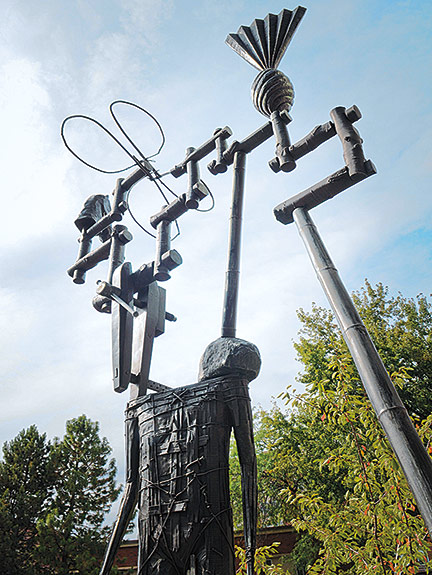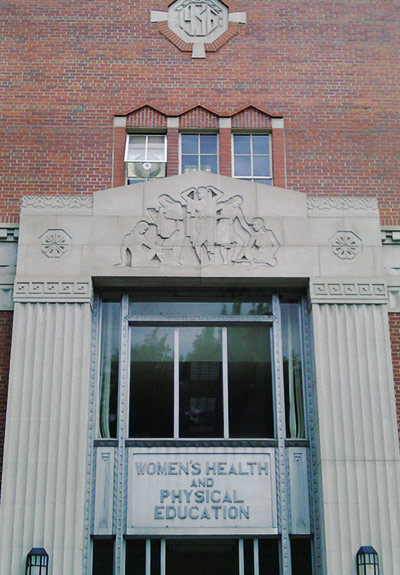In the late sixties, Harold Balazs ’51 helped build a public arts tradition in our region. Along with several members of the Washington Arts Commission, including artist Jacob Lawrence, he created Washington’s Art in Public Places program. Starting in 1974, the program began directing one-half of one percent of all state building budgets toward purchasing contemporary art. The pieces would be owned by the state but could reside at the site of the project.
Having traveled in Spain and Italy, Balazs had realized that the United States could easily support more arts and culture. “Countries in Europe do so much more than one percent,” he says. In a gallery in Rome, he learned that the Italian government at the time prioritized arts investment with a strong culture ministry. So he made it a mission to support it at home.
“Harold is so much a supporter of other artists,” says Jim Kolva ’68 who, with his wife Pat Sullivan, has collected hundreds of original pieces, including a variety of works by Balazs and other WSU graduates. “You would always see him at other artists’ openings.”
Balazs realized that public commissions could be the financial foundation for many artists, and would offer the public access to great works. “When it all started, it was like many government programs, it was to spread the wealth around,” he says. The eligible artists were primarily from the western United States and British Columbia.
Seattle, as a city, had started its own program a year earlier, allocating a full one percent of public project funds. But thanks to Balazs and his fellow commissioners, Washington was a leader, the second state in the country to do this.
Today the state program has placed more than 4,500 works around Washington, both in permanent sites and on loan. A number reside on WSU’s campuses.
In Pullman, west of Hulbert Hall, Larry Tate’s untitled piece of Everdur silicon bronze and stainless-steel cable was one of the first to arrive in 1976. It was soon joined by Robert Ellison’s X-position just off Stadium Way in 1977 and James Lee Hansen’s Stempost in 1979.
Ten years ago, a few significant bronzes including Red Horse Capture by John Buck and The Technicolor Heart (The Big One) by Jim Dine came to WSU for a large sculpture exhibit. Thanks to state arts funding, they found a permanent home.
But public art goes beyond what the state provides. WSU’s own collection should not be overlooked, says Anna-Maria Shannon, associate director of the Museum of Art. Many, like Dudley Pratt’s 30-foot limestone “rangy farmboy” on the side of Holland Library, may simply be taken for granted. There are hundreds of works in common areas, offices, and plazas all around campus. And they have many different owners, including the art museum and the president’s office.
Shannon has started to create a comprehensive catalogue, at least of the outside pieces. It becomes a challenge, though, trying to find everything and then deciding whether it’s art or something else, she says. Would it include the putti on the Stimson Hall Fountain? Or the low relief Art Deco sculpture of five women on the front of the Smith Gymnasium? “Is it a piece of art or an architectural aspect?” Shannon wonders.
For the most part, all these works are things of beauty, provocation, or contemplation. We may not realize how much public art enriches our experience, or even that it’s there, says Tom Kundig, a Seattle architect and friend of Balazs. “But I know it has to have some effect,” he says. “It’s more influential than we can quantify.”
Read more about Harold Balazs in “Finding the Artist”
Here is a brief tour of some of the large-scale sculptures around the Pullman campus of Washington State University:







